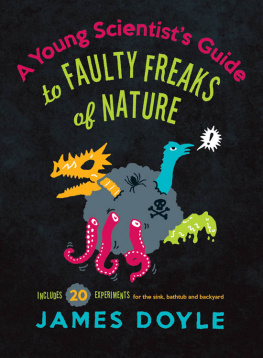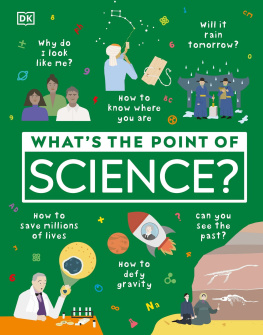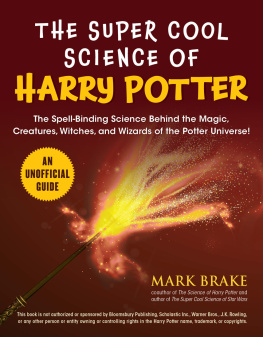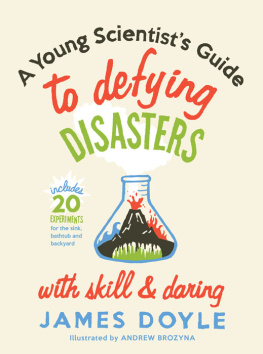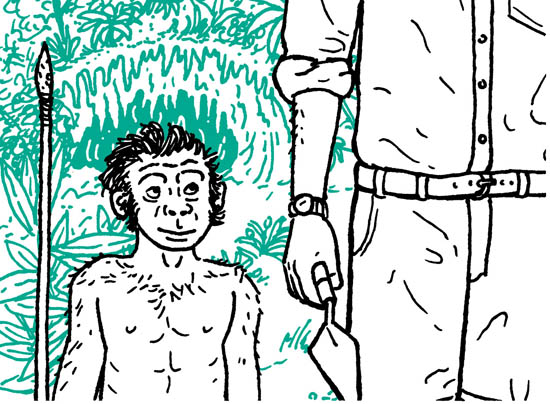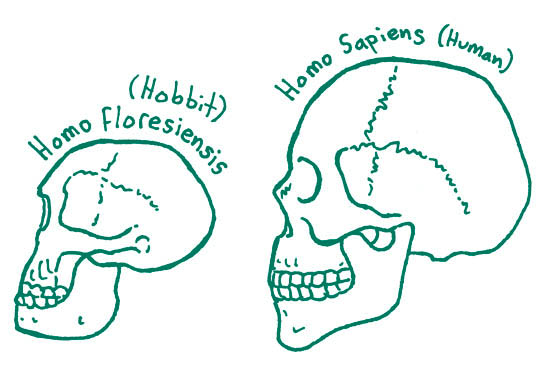A Young Scientist's Guide to Faulty Freaks of Nature
Including 20 Experiments for the sink, bathtub and backyard
James Doyle
Illustrations by Andrew Brozyna

A Young Scientist's Guide to Faulty Freaks of Nature
Including 20 Experiments for the sink, bathtub and backyard
Digital Edition 1.0
Text 2013 James Doyle
Illustrations 2013 Andrew Brozyna
All rights reserved. No part of this book may be reproduced by any means whatsoever without written permission from the publisher, except brief portions quoted for purpose of review.
This book contains activities that may carry an element of risk or danger. Readers of the book are urged to make wise decisions and to consult prudent adults before engaging in activities. The author and publisher disclaim all responsibility for injury resulting from the performance of any activities described in this book. Readers assume all legal responsibility for their actions.
Gibbs Smith
P.O. Box 667
Layton, Utah 84041
Orders: 1.800.835.4993
www.gibbs-smith.com
ISBN: 978-1-4236-2456-1
For Oongh
Back Away From the Book
I repeat!... Back Away From the Book! The contents of this book are not suitable for you and your kind. You are, after all, very likely to be a member of a group of species that now numbers more than seven billion creatures. A group often referred to as humans, Homo sapiens and even, Earthlings. Despite your kind being clever, curious, inventive and at top of the food chain, you have managed to make some seriously monumental mistakes and mind-boggling mishaps.
You guys have single-handedly messed up the planet with a combination of completely, crazy chemistry, birdbrained biology and foolhardy physics. Some of your top scientists have been seriously suspect, and they can take the credit for creating planetary-wide chaos. In your hand you have the true story of the little bird that sounds like a chainsaw when it sings, the food that can make your face fall off, the experiment that made an entire sea vanish and much, much more!
If you are ready to learn from the silly mistakes of the past, then this is the book for you. This book is your guide to some of the strangest science ever seen and youll also discover that some of the things scientists told you were wrong... were actually right! Youll find that the fictional Hobbit was indeed fact. Youll see how the fantasy books of Harry Potter have influenced the world of science forever, and youll meet an all-new creature called spider goat. So, if you have a thirst for the weird, the wonderful and the downright wacky then this is the science book for you. This is A Young Scientists Guide to Faulty Freaks of Nature .
Facsinating and Fearful Discoveries
Humans Have a Habit of Mistaking Hobbits
Scientists are supposed to be among the smartest humans on Earth. After all, they invent amazing things, they find cures for terrible diseases and they know very clever stuff. As a result, most people wouldnt expect them to get things wrong but even the smartest of humans can get things pretty messed up.
Take the idea of hobbits for example. Humans first discovered these tiny, fictional creatures from middle-earth in J. R. R. Tolkiens stories, which include The Lord of the Rings trilogy. Tolkien describes hobbits as relatives of the human race but points out that they are a separate branch of human beings. In his books, he writes about the similarities and differences between humans and hobbits by describing them as Big People and Little People. The world of science paid little attention to Tolkiens writings and scientists were quite happy for them to appear as fantasy in books and movies to entertain peoples imaginations.
Until just over 10 years ago, scientists believed that Homo sapiens (us) were the only human species on Earth since our cousins, the Neanderthals died out some 30,000 years ago. That was until 2001 when the tiny hobbits of Southeast Asia were discoveredblowing apart the belief held by the scientific worldthat hobbits didnt exist.
The discovery of the three-foot (1 m) tall skeleton was made in a cave in 2001 by a team of Australian and Indonesian scientists on the Indonesian island of Flores. Hence, the name The Flores Hobbit and the scientific name Homo floresiensis. At first, the scientists believed that they had found the skeleton of a small child but following detailed tests, it was confirmed that the tiny specimen was, in fact, a full-grown adult. This tiny species would have stood about the height of a three-year-old child when fully grown. Their small stature is thought to have been caused by island dwarfismwhere a group is cut off from the outside world and has only a very limited food supply, which, in turn, greatly restricts growth. Ironically, the tales of Bilbo Baggins and Frodo may not be as far fetched as we might first think.
TRIVIA
The Hobbit was first published in 1937 by J. R. R. Tolkien and has sold over 100 million copies to date. The success of the book resulted three Hobbit movies. For fun, facts, trailers and downloads about The Hobbit 2012, 2013 and 2014 movies go to the website: www.thehobbit.com.
YOUNG SCIENTIST ACTIVITY
How to make a Stalactite
Hobbits arent the only cool things you can find in a deep cave. Some of them are filled with magical shapes and objects created by the processes of nature. With this activity, you can build your very own stalactite. Stalactites form in limestone caves as water packed with minerals seeps through the ground over thousands of years to form amazing icicle-like shapes.
EQUIPMENT NEEDED:
| Two paperclips |
| One length of wool |
| Two empty jam jars |
| Epsom salt |
| One spoon |
| One saucer or small dish |
INSTRUCTIONS:
Take your two jars and fill them with really hot (but not boiling) water.
Now take your spoon and start adding the Epsom salt to both jars. Keep doing this, stirring the jars until all Epsom salts have dissolved.
Place a saucer or small dish in between both jars. Take the wool and cut a piece long enough to reach the bottom of each jar and bridge the gap between the jars.
Now tie the paperclips to each end of the wool to create a weight and lower the ends into their respective jars.
Simply leave for 3 or 4 days and see what happens.
Science Factoid
Capillary action, which is the upward movement of water, helps the water move out of each jar along the piece of wool. As the solution moves along the wool from both jars, eventually the two solutions meet and begin to form drips downward. The water in the solution starts to evaporate and leaves behind a solid-growing stalactite.

